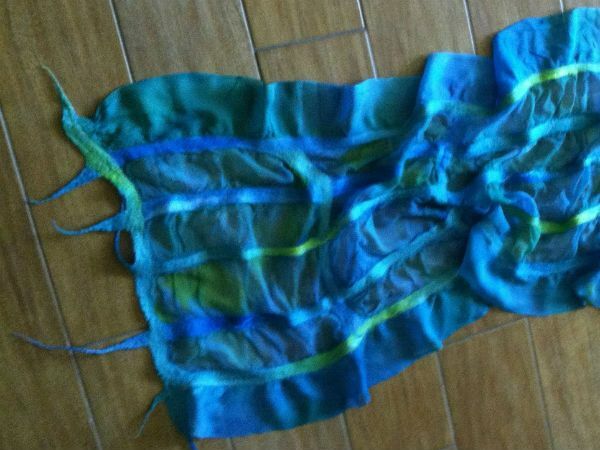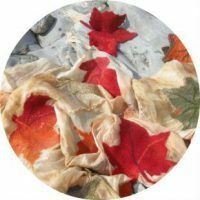
Under the felting of wool, many handmasters often mean exactly the process of fetching all sorts of crafts, unusual ornaments and funny toys. But this creativity has other, less popular branches, such as, for example, the universal technique of decoration with wool nunofelting.
- Basics of
- technique Nunofelting of the scarf
Basics of the
technique This technique is almost a cardinal transformation of the appearance of many accessories, most of them, scarves, capes, scarves, dresses, warm clothes, gloves and so on. It allows you to connect two originally different materials, where the first material is always the wool( finishing material), and the second - any product from virtually any fabric( product for decoration).
In fact, Nunofelting is also a way of rehabilitation of many things. So, it will be useful if the thing is washed, the fabric is stretched, or it is necessary to hide stains, former holes and other acquired imperfections. But, it is worth considering the fact that such a technique does not just rehabilitate a thing, it will completely change it. However, these changes, for the most part, will only take place.
Nunofelting of the scarf
In this master class you will learn the basic principles of working within the framework of this technique by the example of the alteration of a simple chiffon scarf.
Given that the skill is still related to the felting of wool, its principles are similar to the basics of classic wet felting. The bottom line is to transfer the wool to the surface of the product, in our case, a scarf, forming an interesting pattern.
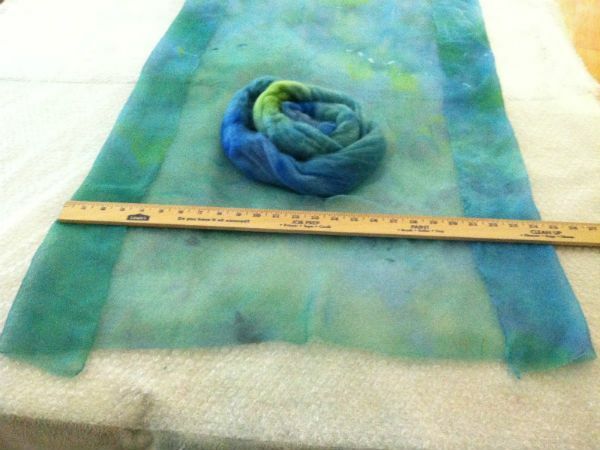
Equip the workplace. Everything should be at hand. It will take wool, soap, water, pimply film, which can be replaced with a cut of gauze, a needle for felting. By the way, the last tool is needed only if you want to pre-form the element from the wool, and then transfer it to the fabric.
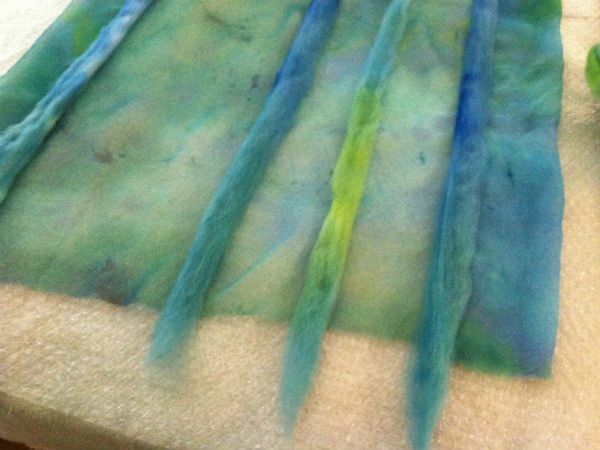
The scarf itself needs to be put on something, which can then be twisted together with it. Suitable, for example, a rug or a small carriage.
Next, start forming a pattern of wool.
Make at least three / four layers.
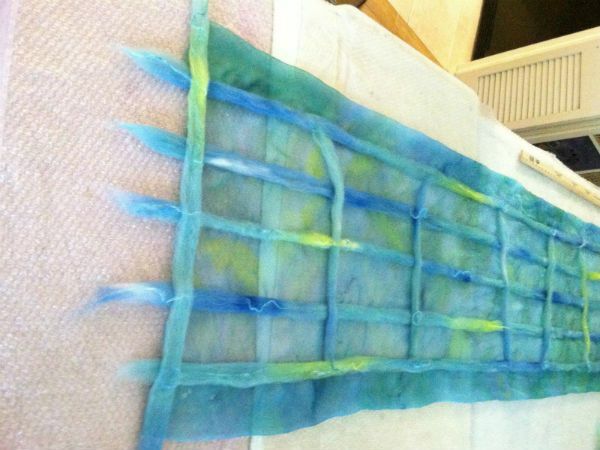
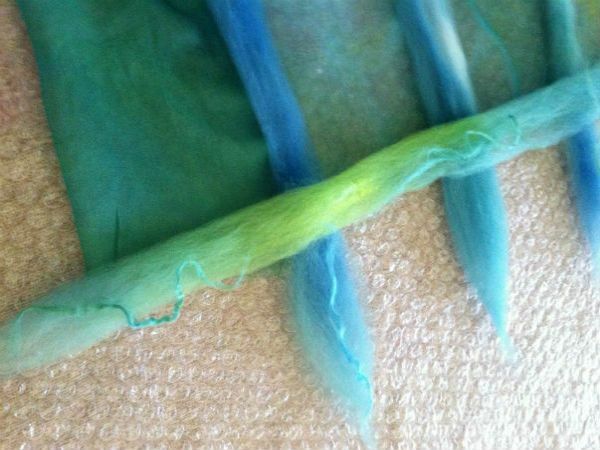
When you make sure that the pattern suits you completely, go to the very process of wet felting. Soak a bit of water in a piece of usual fragrant soap until it completely melts.
Now put a gauze on top of the scarf and apply the mixture over the whole surface of the pattern. Try not to fidget, so that it( pattern) is not broken. Gently smooth the scarf, pressing a little. When the wool takes, start to smooth more actively, at full force.
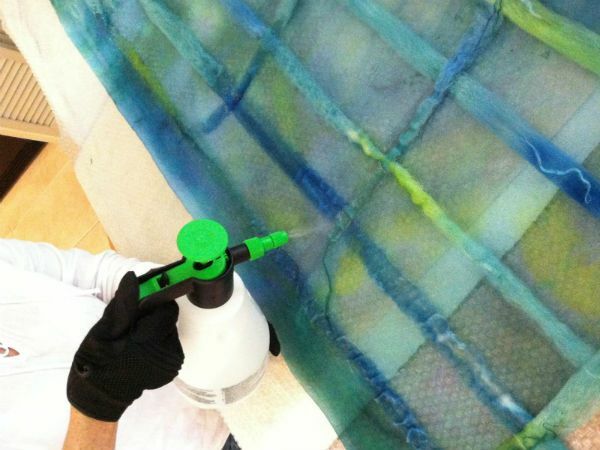
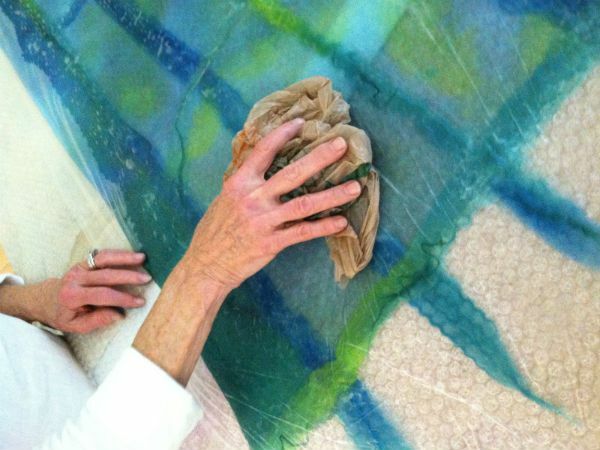
After this, tighten the product together with the carpet. Now it should be used as a rolling pin, as if you are rolling out a dough. This procedure will take at least half an hour.
After this, the product can be reached, and if the wool is wringing from the fabric, allow it to dry completely, if not - repeat the soaping and all other actions. Typically, a single soaping procedure is sufficient for loose patterns.
